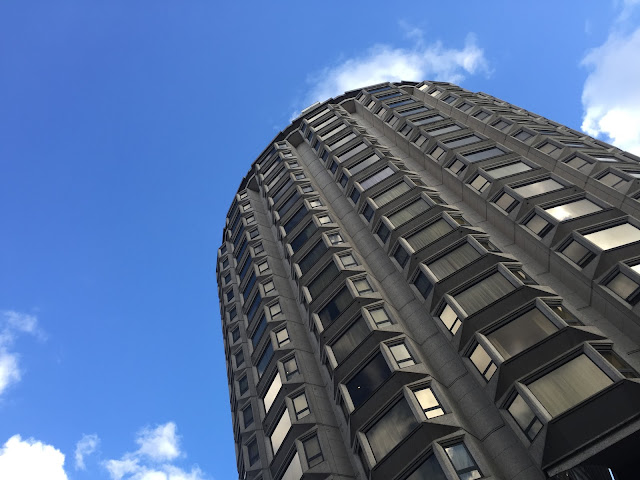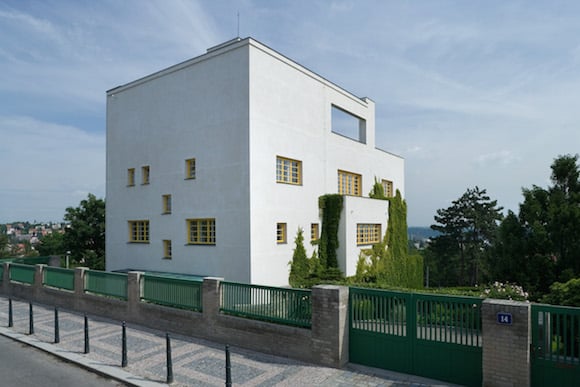As I return to university, I have been asked as part of the actual course structure to contribute a few blog posts to the question of 'what is good design'. Clearly, this is what I have been doing for the last three years although less directly. My intention with this post is to present an ad-hoc piece which presents my own 'house style', later posts will delve directly into the problem of 'what is good design' my aim being to at the culmination have developed a unified aesthetic theory that meets the question in the most banal and lofty (and lenghty) way possible. Until then, Hugh, here is a collection of architectural thoughts from London:
London has a rich heritage in Brutalism, as it does in nearly every other architectural style.
National Theatre, Southbank
Home Office Building & Guy's Tower, London Bridge
River Court, Blackfriars
Commonwealth Institute (Design Museum), Kensington
Brunswick Centre, Russel Square
Park Tower, Knightsbridge
American Embassy , Eero Saarinen, 1960
Alexandra Road Estate, Swiss Cottage
In semi-recent times, many Brutalist buildings have been considered for demolition, like our beloved Preston Bus Station, in the same way that the victorian buildings were stigmatised in the post war period. Robin hood gardens is right now being demolished. However, It is comforting that many of the seminal examples have been preserved, comforting from the perspective of historical preservation, if not aesthetic experience.
One complex which has never been under any threat is the Barbican, which, as a multiplicity of dezeen articles never fail to remind us, this is now, if it wasn't always, 'first class' accomodation. Perhaps this is to do with it's central location in the city, or because of the inclusion of a 'proper' cultural centre and not a mere condescending 'youth zone' or the like.
Moving out of the city though my temporary home in Elephant and Castle, I was surprised on my morning run to be greeted with what seemed to be slightly less inspirational copies of Le Corbusier's Unite D'Habitation.
It turns out I had located the Aylesbury Estate, famous as a location which ...
"For years .. was the first port of call for directors, producers and location scouts looking for grim backdrops to murder scenes, gun and drug storylines and gang-related crimes in soaps and gritty dramas."
It is this form of non-culural, non-posh modernism that seems to grind peoples gears, especially in contrast to the picturesque streets just meters away.
On a sunny day like today though, things didn't seem too bad, It certainly didn't seem like a murderous hell-hole, but only the experience of living here for a long while will tell you the true story.
***
The meta-story over all of london however, is that of a battle between the low-earning current residents and their rich, non-dom competitors for residential space within zone one, and of 're-development' and 'renewal', In fact, most of Elephant and Castle and Walworth seems not to be buildings, but rubble and hoardings promising either.
On the low-end of the spectrum, 'renewal' is generally an issue of re-cladding and masking up of the old brutalist, but not culturally relevant, architecture. Aesthetically this is questionable, and may serve to primarily make areas more attractive to high-end developments. On a very poignant personal level this means further social cleansing and horrible incidents such as Grenfell Tower.
The free market decides though doesn't it? And as social housing becomes less of a priority compared to historical highs in the brutalist period, my aim is not so much to make a political point, but to notice a very weird phenomenon.
'N E W B R U T A L I S T' O F F I C E S P A C E
All around Elephant and Castle, and London as a whole, are 'new brutalist' developments.
New Brutalism can also be, more accurately, called the 'New London Vernacular', which aims to combine square forms with more traditional-looking materials.
The resurgence of Brutalism is not new news, Jonathan Meades' documentaries for BBC4 finish on such a point. And, aesthetically, I personally have no qualms with a style which combines a Loosian distain for decoration with a 'respect' for locally characteristic materials and finishes.
In fact, It is perhaps the fact that these buildings share more with early modernist Loos-ism than that of their claimed brutalist inspiration.
What is very confusing to see, is that the very building efforts which directly rid us both of Brutalism and of the Social Housing initiatives that brutalism supported, are actually using a bastardised version of the Brutalist language itself.
Two 'new brutalist' dwellings look over a soon-to-be-de-brutalised building
***
2 weeks later at the London Design Festival, I had the opportunity to be 'on the pulse', and one of the middle class fetishes at the moment seems to be, you guessed it, brutalism.
The latter example is the most pertinent example of how brutalism is being bastardised and whitewashed by the Shoredtich class. Brutalism was a design movement that added aesthetic value to the grim reality of post-war social housing and social provision, it was exactly about providing for the needy, whilst communicating a certain aggressive despair for the ways of the modern world. Today's middle-class brutalism aims to comfort the design intelligista with a baby-blue representation of those ideas, whilst it silently sweeps the poor under the carpet. Great Design? maybe, but certainly not a positive moral tangent.




























This comment has been removed by the author.
ReplyDelete